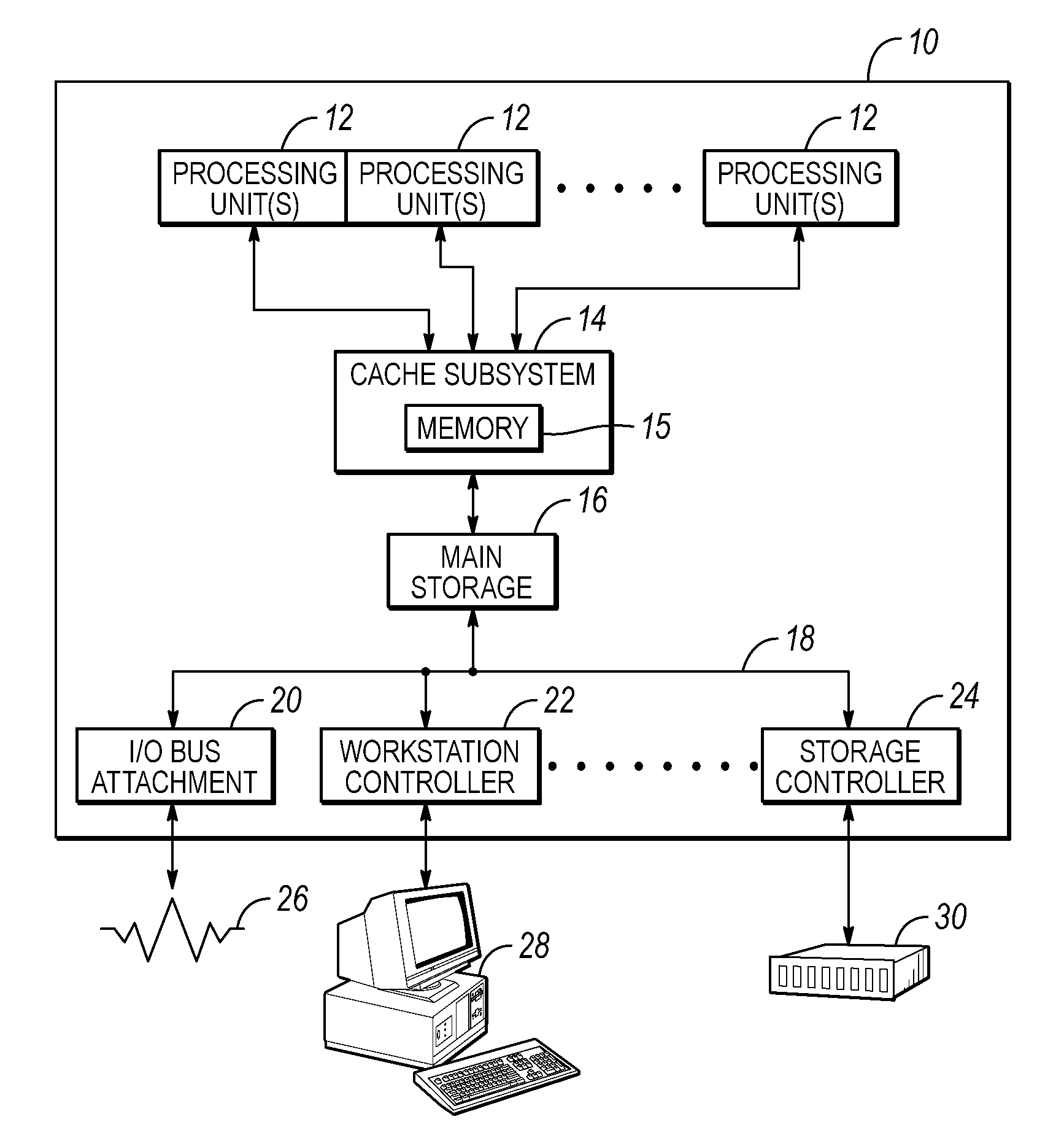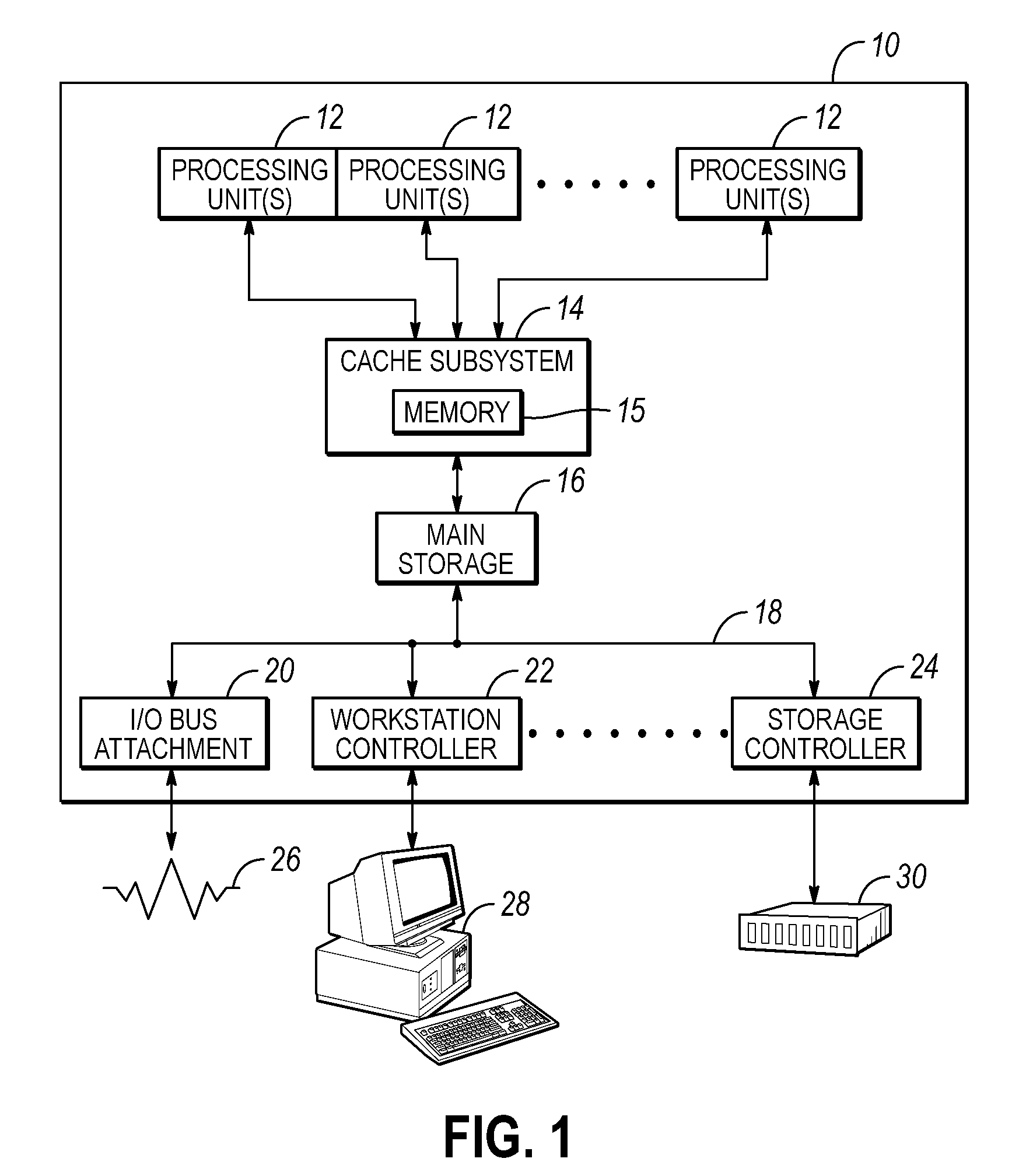Predictive ownership control of shared memory computing system data
a computing system and shared memory technology, applied in computing, memory addressing/allocation/relocation, instruments, etc., can solve the problems of increasing the speed of microprocessors, affecting the performance of the computing system, the performance of the microprocessor as well as the computing system, and becoming a significant bottleneck on memory speed and capacity, so as to achieve efficient sharing of cache lines
- Summary
- Abstract
- Description
- Claims
- Application Information
AI Technical Summary
Benefits of technology
Problems solved by technology
Method used
Image
Examples
Embodiment Construction
[0038]Embodiments of the invention include a method, circuit arrangement, and design structure to control ownership of a cache line in a shared memory computing system of the type that includes a plurality of nodes. Embodiments of the invention provide for a hardware-based lock prediction data structure, which may be a lock prediction table, which includes lock prediction data associated with a cache line to indicate whether that cache line is associated with lock behavior or atomic update behavior. The lock prediction data may be updated in response to a memory request for the cache line and indicate whether the memory request includes lock behavior or atomic update behavior, thus also being predictive of whether future memory requests include lock behavior or atomic update behavior. Thus, determining whether a cache line is associated with lock behavior or atomic update behavior may be accomplished in various embodiments of the invention without adding additional data (e.g., such ...
PUM
 Login to View More
Login to View More Abstract
Description
Claims
Application Information
 Login to View More
Login to View More - R&D
- Intellectual Property
- Life Sciences
- Materials
- Tech Scout
- Unparalleled Data Quality
- Higher Quality Content
- 60% Fewer Hallucinations
Browse by: Latest US Patents, China's latest patents, Technical Efficacy Thesaurus, Application Domain, Technology Topic, Popular Technical Reports.
© 2025 PatSnap. All rights reserved.Legal|Privacy policy|Modern Slavery Act Transparency Statement|Sitemap|About US| Contact US: help@patsnap.com



